Cover Gallery: Setting Sail
Have the doldrums? These illustrations of schooners and sloops will buoy your spirits in no time.
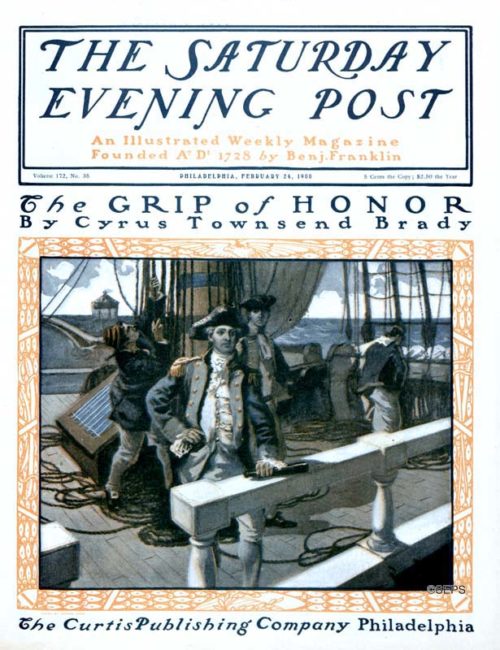
By George Gibbs
February 24, 1900
Illustrator George Gibbs was also an author, having written more than 50 books. Most of his books fell into the the spy and adventure genres, making him a perfect fit to paint this cover to accompany Cyrus Townsend Brady’s story. Gibbs was the illustrator of the first color cover of the Saturday Evening Post, which was published on December 30, 1899.
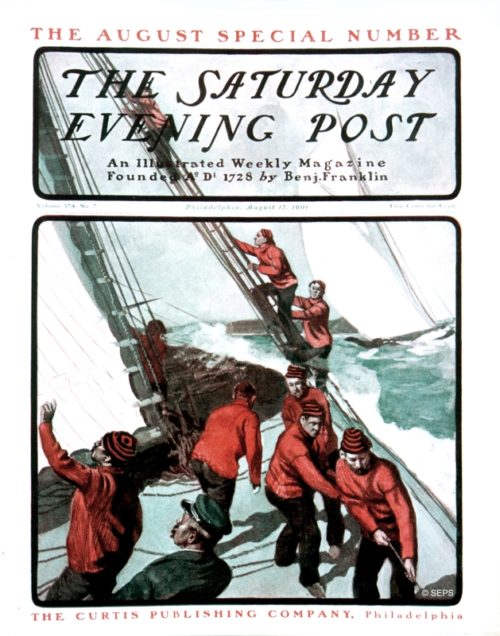
Artist Unknown
August 17, 1901
This cover by an unknown artist was drawn a year after sailing first debuted at the Olympics, in Paris, France in 1900. A Swiss sailor at the games, Hélène de Pourtalès, was the first ever female Gold medalist of the modern Olympic era, according to sailing.org.
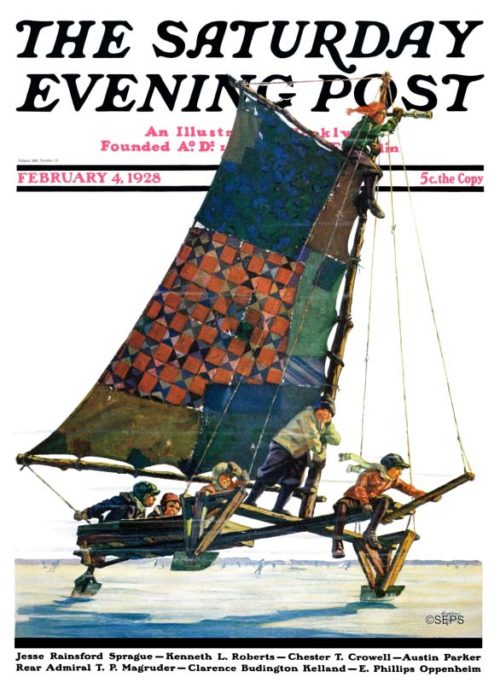
By Eugene Iverd
February 04, 1928
Artist Eugene Iverd grew up in Minnesota, giving him plenty of opportunities to observe ice boating. Iverd was known for painting indelible childhood moments of kids around the campfire, on the football field, in the swimming pool, or on a windswept, frozen lake.
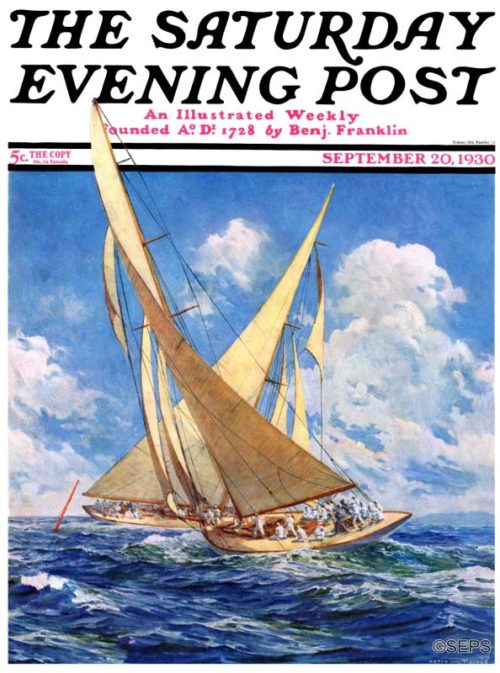
By Anton Otto Fischer
September 20, 1930
Anton Otto Fischer painted hundreds of covers and interior illustrations for the Post. He also illustrated books such as Moby Dick, Treasure Island, and 20,000 Leagues Under the Sea.
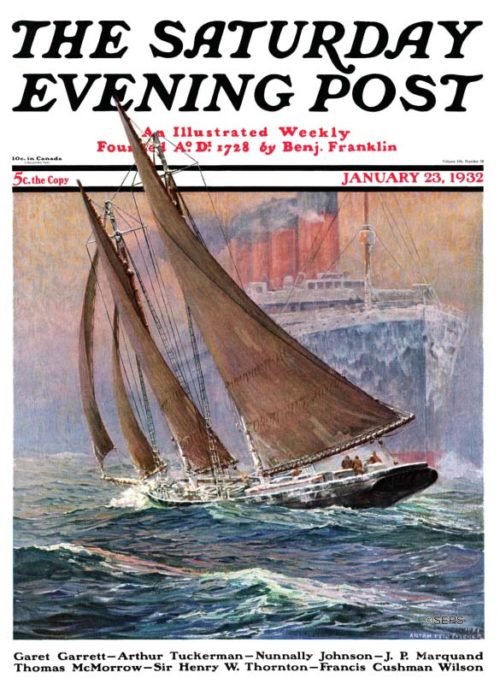
By Anton Otto Fischer
January 23, 1932
This Fischer illustration beautifully captures a moment of drama and also serves as a metaphor for the encroachment of the industrial age over the old ways.
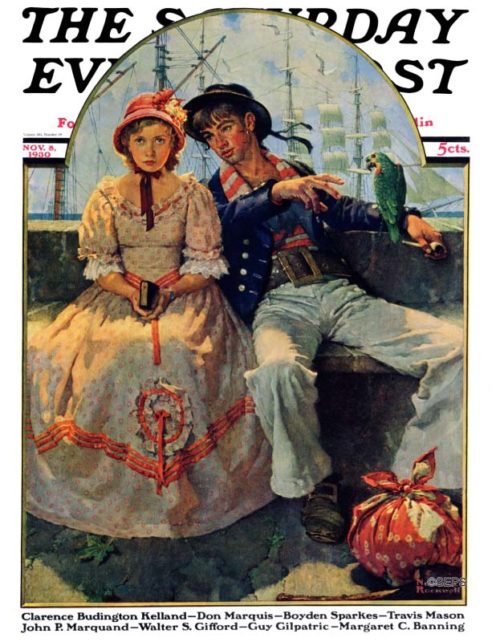
By Norman Rockwell
November 8, 1930
This illustration by Norman Rockwell is a departure from his typical “slice-of-America” scenes.
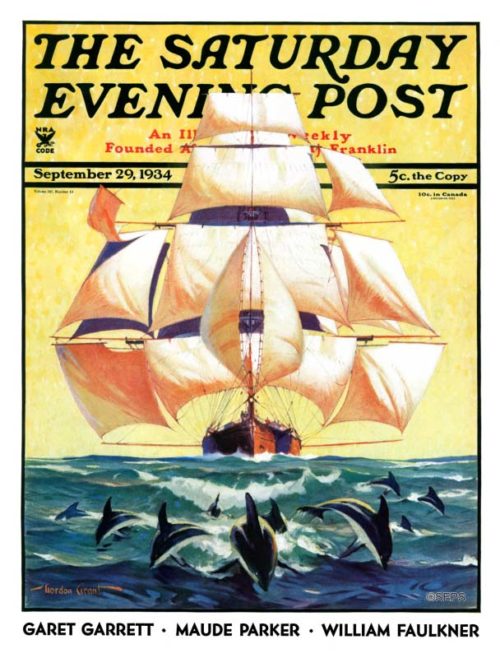
By Gordon Grant
September 29, 1934
Artist Gordon Grant was well known for his maritime covers, particularly his watercolor of the USS Constitution. He was also the cover designer for the first edition of the Boy Scout Handbook in 1911.
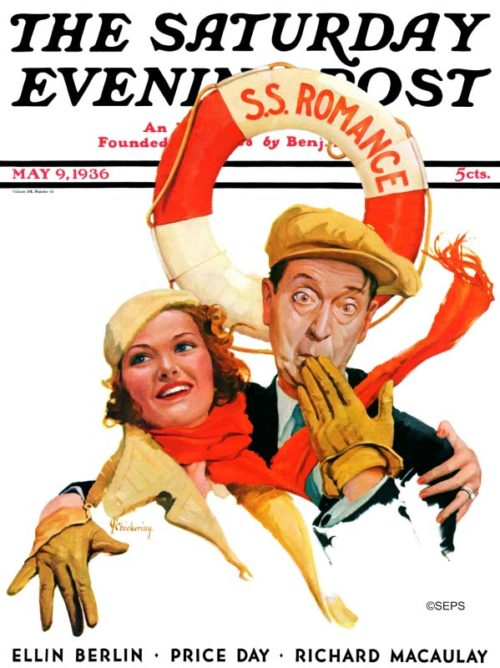
By Charles R. Chickering
May 09, 1936
Charles Chickering got his start as a medical illustrator of the wounded and dead during the World War I, and went on to a career as a postage stamp designer, before painting this winsome cover for the Post.
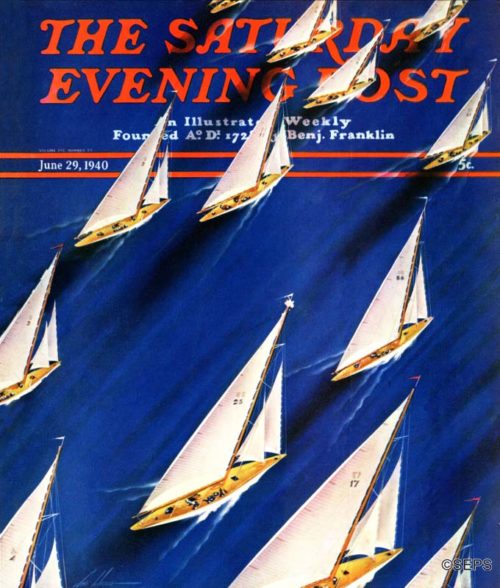
By Ski Weld
June 29, 1940
Ski Weld’s covers always depicted action – skiers jumping, snow geese flying, or, in this case, a stunning regatta of boats sailing.
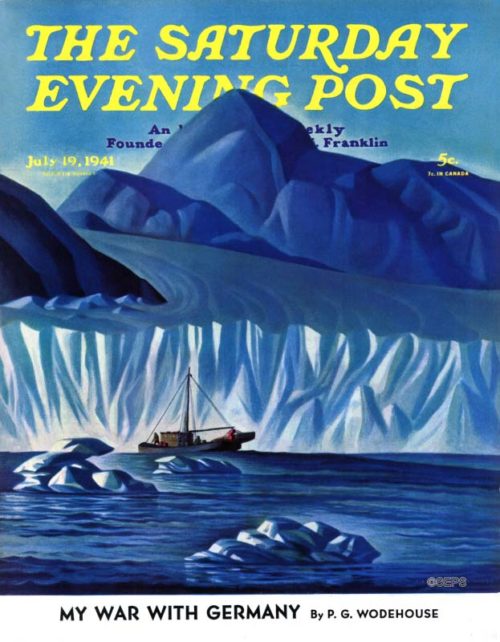
By Dale Nichols
July 19, 1941
Dale Nichols was best known for his paintings of red barns in rural, Midwestern landscapes. This northern scene was a departure from his usual subject matter.
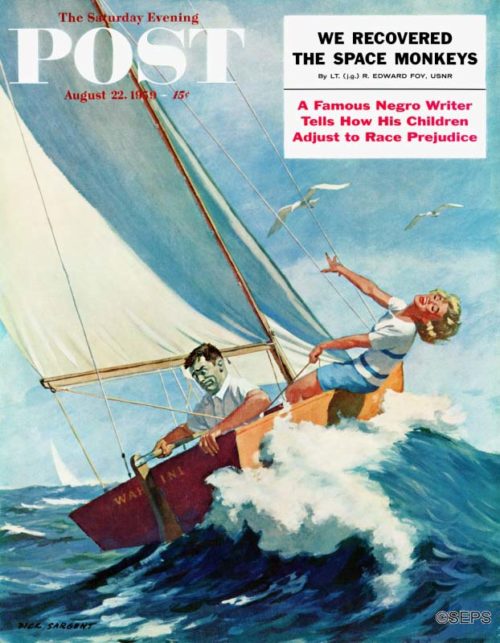
By Richard Sargent
August 22, 1959
Artist Richard Sargent (1911-1979) painted 47 Post covers between 1951 and 1962, when photographs were rapidly replacing magazine illustrations. Sargent often used a playful narrative style where one picture did indeed express a thousand words.
Classic Covers: Artist Eugene Iverd’s World of Children
Artist Eugene Iverd (1893-1936) came to light in the golden age of illustration that embraced the likes of J.C. Leyendecker and Norman Rockwell. He mostly painted children, and his Saturday Evening Post covers are a treat to be savored.
Daydreaming accordionist – March 13, 1926
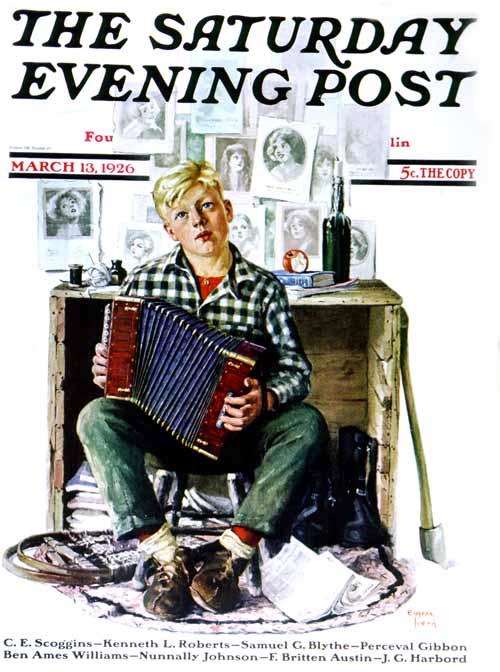
March 13, 1926
In 1926 a young Eugene Iverd wrote an ecstatic letter to his mother. “I can’t wait another moment. I must tell you the good news.” He had sent 4 paintings to The Saturday Evening Post and they were interested! Mr. Martin, a managing editor, even visited the artist personally. This daydreaming young man serenading his movie idols was the first Iverd Post cover.
Boy Botanist – August 27, 1932 – Eugene Iverd
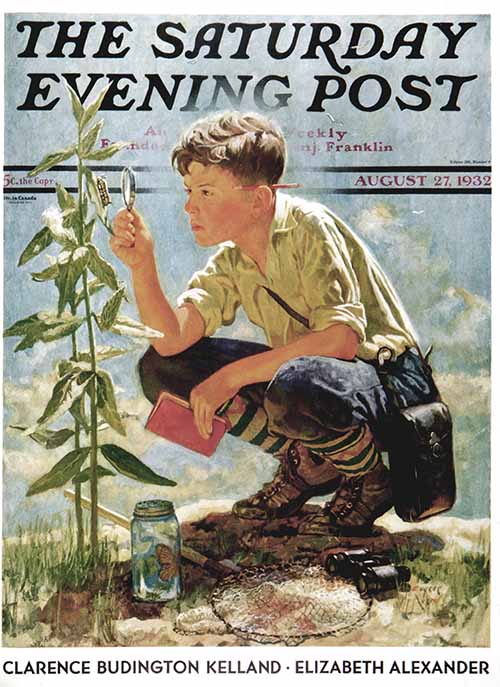
August 27, 1932
Letter to Mom, continued: “P.S. Oh! Yes! I must tell you this. (Mr. Martin) said Chief Editor Mr. Lorimer said, ‘Who is this man Iverd? Why haven’t we seen some of his work before?’” This beautiful 1932 cover with wonderful colors is a prime example of what Post editors discovered in this artist. This budding entomologist is collecting, studying and noting every find. In his short life (he died at age 43), Iverd did numerous magazine covers, 29 of them for the Post. The one below has similar pastel tones.
Boy and Dog in Nature – June 11, 1932 – Eugene Iverd
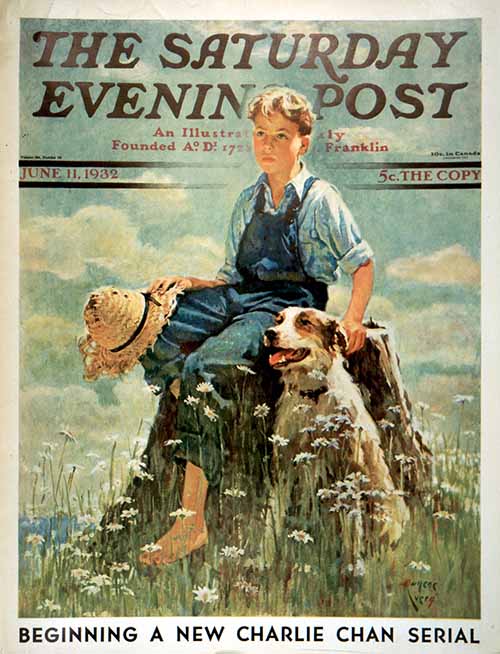
June 11, 1932
These two covers would go beautifully together, framed and hung in a special place. This one has a timeless Rockwellian feel. Growing up in Waseca, Minnesota, Iverd “showed incredibly early talent and drew constantly and on anything,” his granddaughter, Lyn Farquhar, told us in a 2001 e-mail. “He drew many pictures on the blank pages of hymnals n the Lutheran Church attended by the family. Many of these later became treasured keepsakes by town citizens. His artistry was supported by his mother but frowned upon by his father.”
Snow Shoveler – January, 3 1931- Eugene Iverd
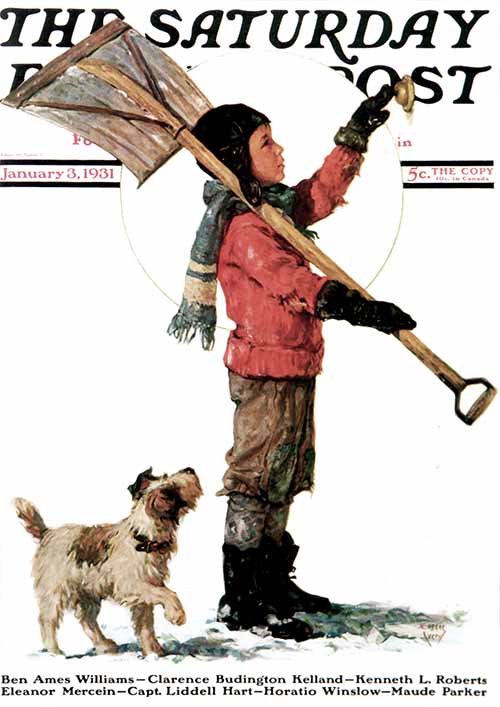
January 3, 1931
An industrious young man (and little furry helper) is ringing doorbells to turn a snowfall into a financial opportunity. It’s from 1931, but it could be a drawing of last winter. Some things never change.
Lighting the Pumpkin – November 3, 1934 – Eugene Iverd
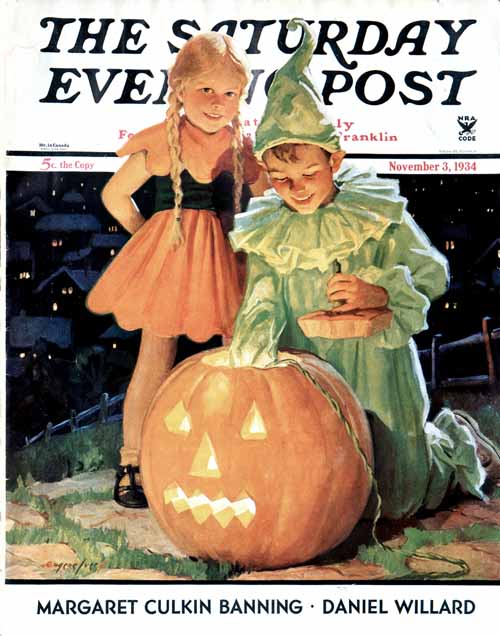
November 3, 1934
1934 was a pivotal year for the Great Depression. Unemployment was still high, but we seemed to be turning a corner. FDR was the American president and the political rumblings in Europe were much scarier than a creepy jack-o-lantern. This colorful scene of two trick-or-treaters is a Halloween favorite. I love the use of color against the background of dark houses with twinkling lights.
Children on swing – June 22, 1935 – Eugene Iverd
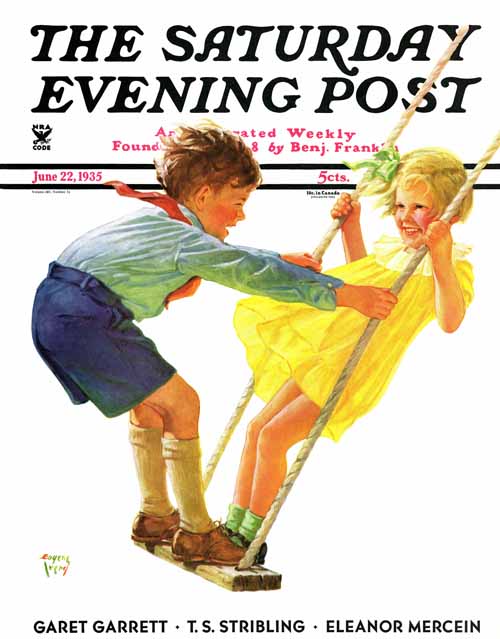
Iverd was an art teacher in Erie, Pennsylvania, so he knew something about children. This fun cover from 1935 was one of his last. Sadly, he died in 1936 of pneumonia. “Antibiotics, which could easily have saved him,” wrote his granddaughter, “were not available until the following year.” He was only able to spend three years as a full-time artist, “yet he published over 60 magazine covers, and over 150 advertisements, story illustrations, calendars, lithographs,” wrote Ms. Farquhar. “His productivity still astounds me.”